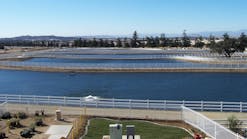Study Finds Grey Infrastructure Increases Mississippi Flooding
A new study, published in Nature International Journal of Science, found that Mississippi River flooding is worse now than any other time in the past 500 years and points to grey engineering as a possible cause. Lead Researcher Samuel Munoz of Woods Hole Oceanographic Institution and a team of researchers from Massachusetts, Illinois, Alabama, South Carolina, Texas and Liverpool, England, concluded that the increase in flooding is due to a combination of climate change and flood control engineering.
The researchers analyzed 500 years worth of data by looking at tree rings and sediment from oxbow lakes, which are bends that were once a part of the Mississippi but turned into lakes when the river changed path. According to the Associated Press, Munoz was surprised by the findings, as he had expected to find early floods more significant than recent.
“I just expected that, given more time, you would see events that were bigger,” Munoz said. “Because there’s a longer perspective, there’s more chance for something really big to happen.”
The research raises the debate of whether grey engineering or more nature-based flood control solutions are more effective long-term. Up to three quarters of the increased flood risk may be attributed to dams, walls and levees, according to the researchers. Some scientists argue that grey engineering has actually caused the flow of the Mississippi to rise by preventing it from running its natural course.
The Washington Post recently published an in-depth feature called “Taming the Mighty Mississippi,” which investigated the impact of dams and levees on managing the river water and compared the merits of grey infrastructure versus nature-based flood control solutions. According to the article, barge industry members are advocating for bigger dams, while some researchers point to dams as a part of the problem, not the solution.
Moving forward, Munoz and his team have received funding to expand their research to cover more of the Mississippi including, the Missouri River, the Ohio River and the Arkansas River. They hope their research can inform the U.S. Army Corps of Engineers and their flood management strategies in the future.






